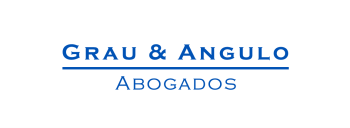The new Patents Act (24/2015) came into force on April 1 2017, replacing the previous Patents Act 1986.
According to its explanatory memorandum, the new act aims to modernise the Spanish patent system and bring it further into line with EU and international legal frameworks. One of the most notable amendments regarding patent litigation is the introduction and regulation of protective letters in Spain for the first time.
Protective letters originated under German doctrine in the first half of the 20th century. Following their recognition in German case law, protective letters were introduced in other European countries. They are also regulated by the Unified Patent Court's Rules of Procedure.
A protective letter is a procedural instrument of anticipatory defence by virtue of which a party that feels at risk of being subject to an ex parte preliminary injunction can file with the court a submission to justify its legal position, thus seeking to reduce the risk of the court granting the preliminary injunction without hearing the defendant.
Although no regulation of this procedural instrument existed in Spain until the new Patents Act, in recent years some companies have filed protective letters before the Barcelona and Madrid commercial courts. The first case in which a protective letter was filed in Spain was in 2013. The letter was accepted by Barcelona Commercial Court 4 in an order of January 18 2013. However, whereas the Barcelona patent courts have accepted the filing of protective letters, the Madrid courts have not (eg, Madrid Commercial Court Number 1 order of January 29 2014).
The Barcelona patent courts not only accepted the use of protective letters, but also encouraged their use by creating special protocols to speed up the handling of preliminary injunction motions in large business fairs and congresses held in Barcelona, such us the Mobile World Congress and Alimentaria.
As of April 2017, protective letters will be accepted by all competent courts handling patent cases. According to Article 132 of the new Patents Act, a party which fears that a patentee might request an ex parte preliminary injunction against it can file a protective letter.
The filing of the protective letter will open a judicial file, of which the potential plaintiff (ie, the patentee) will be informed.
Protective letters are effective for three months. This three-month term is one of the differences between the Patents Act and the Unified Patent Court's Rules of Procedure, as the latter of establishes that a protective letter is effective for six months, which is extendable for another six months if the party that filed the protective letter requests such an extension (Rule 207.9).
Nonetheless, although the Patents Act does not regulate the possibility of extending the efficacy of protective letters, it seems that at least the Barcelona patent courts will accept such extensions (eg, Barcelona Commercial Court 5 order of January 5 2017).
According to the new Patents Act, if the patentee files its preliminary injunction motion in a different competent court from the one which received the protective letter, the patentee must inform that the protective letter is being handled by a different court. This derives from the fact that the new Patents Act does not contemplate a protective letter registry. Thus, the patentee has the burden of informing the courts of the existence of a protective letter. To make this easier, the Barcelona patent courts – for example – are being proactive and informing other patent courts of the protective letters that they receive.
As with any matter that is regulated for the first time, some aspects could be improved. However, overall, the regulation of protective letters is a step forward. The next step will be to see how protective letters work in practice and to what extent they prove to be an effective and useful tool.
For further information on this topic please contact Ana-Laura Morales at Grau & Angulo by telephone (+34 93 202 34 56) or email ([email protected]). The Grau & Angulo website can be accessed at www.gba-ip.com.
This article was first published by the International Law Office, a premium online legal update service for major companies and law firms worldwide. Register for a free subscription.



